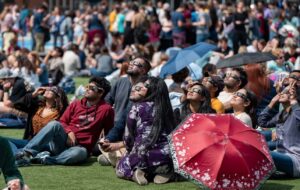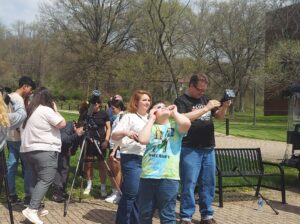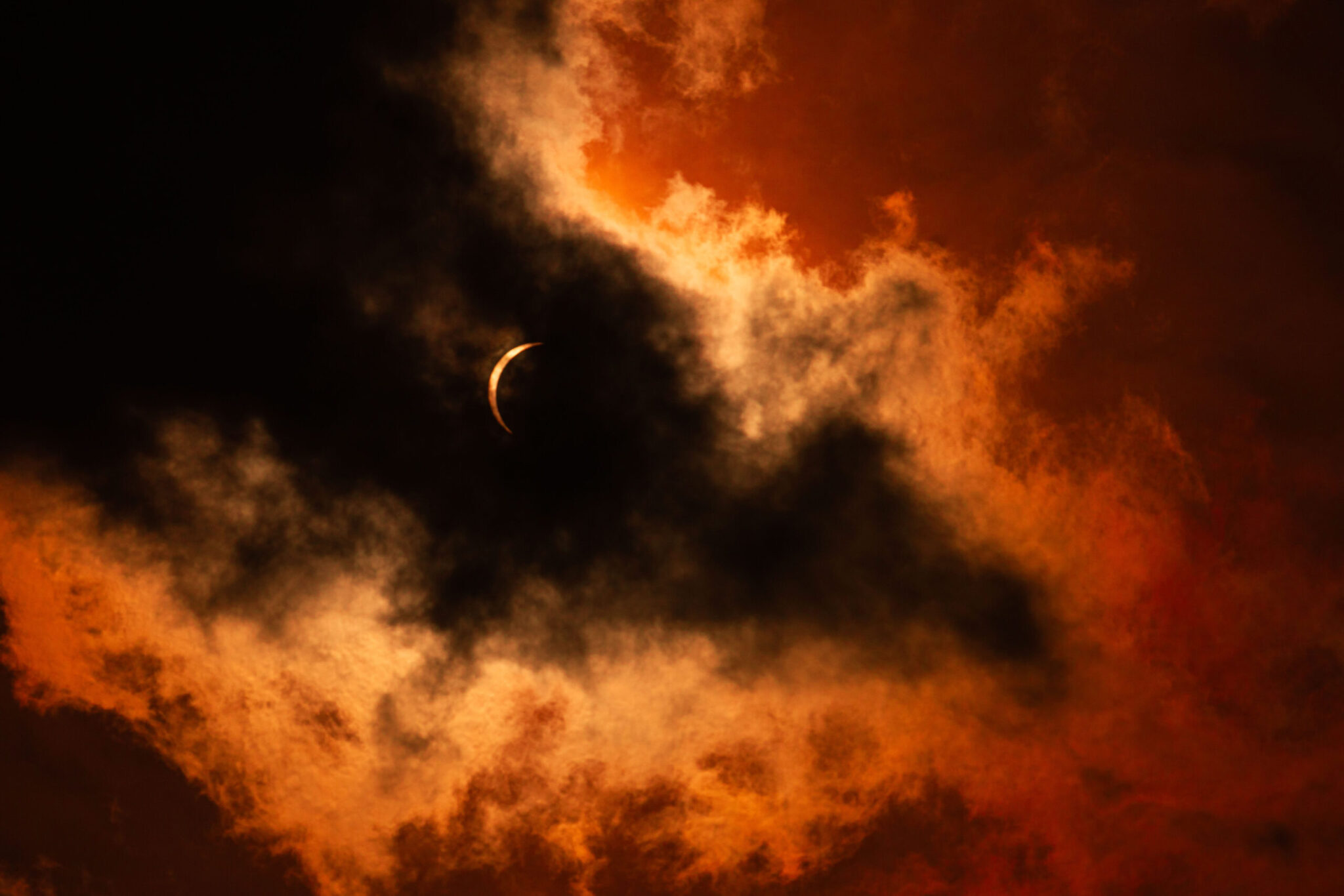Story by Katherine Skeldon, MetroNews, and Kaitlyn Eichelberger, The Dominion Post
MORGANTOWN, W.Va. — College students from Morgantown to Institute gathered on their campuses Monday afternoon to watch the solar eclipse.
The WVU Mountainlair Plaza seemed to be the perfect spot for dozens of students to don their eclipse glasses and soak in the moment.

“I love seeing people interested in the field,” said WVU Planetarium teaching assistant and Ph.D. physics and astronomy student Jackson Taylor told the Dominion Post. “I’ve been getting so many good questions; people are really engaging with the science of astronomy.”

WVSU’s S.P.A.C.E Club and the College of Natural Sciences and Mathematics were among them.
Excited students passionate about science and the once-in-a-lifetime event gathered near the clock tower in the middle of campus, not only with their special eclipse glasses, but telescopes and cameras that had special lenses on them, as well.
President of WVSU’s American Chemical Society and Vice President of the Space Club, Ciera Moles said it was a great experience for the students to host and to discuss what they’re most passionate about.
“This is pretty exciting for both the students and the community, because it’s a good time to come together, it’s a good outreach opportunity for the students to show what they know and their expertise in the sun, the moon and when they come together what happens with the solar eclipse,” Moles told MetroNews.
Space Club treasurer, Zimren Dixon said it’s important to host such an event on campus as not everyone knows what a solar eclipse actually entails.
“It’s truly remarkable, seeing the partial solar eclipse at least, being able to be on campus for it and making sure our student body gets to see more space-related stuff, it’s just something that really matters,” said Dixon.
While West Virginia was only to get a partial eclipse Monday, as the path of totality was expected for just 13 states, Alexander Bailey, a member of the Space Club, said the event is pretty rare and remarkable nevertheless.
“The actual change in light will be fairly marginal, and so our eyes will likely adjust to it as it’s occurring, so from our point of view it won’t actually seem like it’s getting much darker, whereas in actuality it is,” said Bailey.
However, he said if we were in a state such as Ohio, in what is called the Band of Totality, it would appear as if it was nighttime.
Bailey said what also makes the phenomenon remarkable is that it provides the opportunity to study different layers and certain features of the sun that are otherwise unobservable to the human eye.
He said the inner-most layer, known as the Photosphere is the layer that is the most dense, and because of that, he said that’s the layer we typically see, but Bailey said during the eclipse, the other layers get slightly exposed as well, giving us the opportunity to see those layers in isolation without them being blocked by the Photosphere.
“When the moon comes in front of the sun, we can study the other layers of the sun’s atmosphere,” Bailey explained. “In particular, the Chromosphere, which is the second highest layer, and then ultimately there is the highest layer called the Corona.”
While a solar eclipse occurs once every one to three years somewhere around the globe, it’s usually only visible from Earth’s poles or from the middle of the ocean, according to NASA.
Moles said it’s no wonder many stories were created throughout history of the phenomenon, as she said it looks pretty strange to see the sky darken and to witness a halo-like effect from the moon coming in front of the sun.
She said even today, with all of the scientific knowledge we have to back the event up, it’s still quite strange.
“Back way back when, the Aztecs used to view this as kind of a dooms day event, but for us it’s really interesting because there’s a lot of different phenomena that happens, like there will be a drop in temperature, everything gets dark, and you can actually look at the sun,” Moles said.
Dixon said regardless of where you were that was at least near the path of totality in viewing the eclipse Monday, it was still something to remember.
“This kind of eclipse only happens every once in a while, the next one will be in the next 15 years, so it is a big deal,” said Dixon.
The last total solar eclipse was in 2017. The next anticipated solar eclipse is projected for Aug. 23, 2044.

